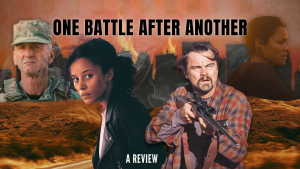Council offers a handful of ‘campus values’
February 27, 2007
Sacramento State got some love from university community members on Valentine’s Day when they gathered to mull over the principles that will guide its future.
Twenty-four administration, faculty and staff members discussed a drafted list of the university’s campus core values Wednesday at the California Suite in the University Union during an open meeting held by the Strategic Planning Council.
“These values will ultimately drive other conversations,” Provost Joseph Sheley, who serves as the council chairman, said. “It sets the groundwork for specific planning at the unit levels.”
Sheley said the draft statement of campus core values was developed over a series of nearly weekly council meetings during the fall semester. He said it is a revision to the university’s current strategic plan, which was originally written in 1996 and has undergone several revisions.
“We haven’t thrown (the 1996 strategic plan) out yet,” Sheley said. “We’re revising it cosmetically to be a better instrument to help us make better decisions.”
The draft statement of campus core values, which is available through the Strategic Planning Council’s website at csus.edu/spc, identifies Sac State as “an institution of higher learning, a public institution in the California State University system, a comprehensive university, a metropolitan university and a destination campus.” A list of five to six values, ranging from intellectual freedom and breadth of academic offerings to an informed, engaged society and a vibrant campus life, fall under each identity.
Sheley said he believes the statement of campus core values, developed by the Strategic Planning Council over the fall semester, will be the bedrock of principles that shapes decisions made by any university group.
According to Sheley and other members – Faculty Senate Chair Michael Fitzgerald and Economics Department Chair Stephen Perez – all the different constituency groups of the campus community were tapped throughout the fall semester for ideas. The council also considered the original Sac State strategic plan and plans from other universities to derive the draft.
Now that a draft is generated and ready for public feedback, Fitzgerald said two public meetings have been held – one on Wednesday and one on Feb. 13 – to get public reaction and suggestions to the core values.
Though he agreed with the spirit and intent of the 1996 document, Sheley said it is lengthier, not as easy to follow and not as direct.
“It just needs to be simply stated and user-friendly,” Sheley said. “There’s a certain level of abstraction needed because you don’t want to tie anybody’s hands.”
Yet it was the lack of specific wording that bothered some people.
Professors Cristy Jensen, Maurine White and James Sobredo along with global education coordinator Monica Freeman were adamant about avoiding cliche language like “welcoming, supportive campus community” and advocated for the addition of intellectual discourse and dialogue among the core values.
“A welcoming atmosphere is not easy to project during times of plenty, but the freedom to talk about issues (is measurable),” Freeman said.
Jensen said she wanted to see “a trusting environment for intellectual dialogue” listed among the values.
“It’s the bedrock that allows us to work on other things,” Jensen said.
Said White: “Not just intellectual freedom but having a community of dialogue. That’s something rich and important. Something we can capitalize on.”
Government Professor Jeffrey Lustig said he wanted to add “respect for different segments and their roles,” “commitment to students” and “defense of academic freedom” to the list of values.
Others in attendance, like Pamela King, science educational equity coordinator, spoke in favor of adding a value of the workforce, partnerships and ensuring material resources to make help students succeed.
Many voiced their preference to change “an informed, engaged society” to “informed, engaged citizens.”
Council member Perez said the council wrestled with the wording but felt society was inclusive of non-U.S. citizens.
Sheley said the Strategic Planning Council will reconvene at some point to sift through the feedback and figure out where things need to be edited and that he is more excited about what happens after the statement of campus core values is accepted and finalized.
“The most exciting conversations are going to be at the next level when people actually need to use and apply these,” he said.
Formed in spring 2006, the Strategic Planning Council made up of staff, student, faculty and administration representatives whose duties include reviewing and recommending plans and action priorities to campus President Alexander Gonzalez, according to the council’s website.
“We had a really good cross-section of the campus community,” Fitzgerald said of the Strategic Planning Council’s diverse membership. “I don’t think there’s anyone not represented.”
Currently, two empty seats are waiting to be filled: an ASI-elected student liaison to fill a seat left empty when former ASI President Angela Arriola resigned in January and a member of the outside community who will most likely be an alumnus, Sheley said.
“We’re taking it to the community. We’re targeting all the constituencies (of the university) with these meetings,” Fitzgerald said. “Faculty, staff and students are welcome.”Of the 24 people who attended the meeting, none were students.
Other than the event announcement posted on the Sac State website, Sheley said in an interview after the Wednesday meeting that several of those who attended were notified by e-mail as well. Students were sent a similar notice via SacLink.
“I don’t know why students weren’t there but they were certainly welcome,” he said of the Wednesday meeting.
Marilen Bugarin can be reached at [email protected]






















































































































